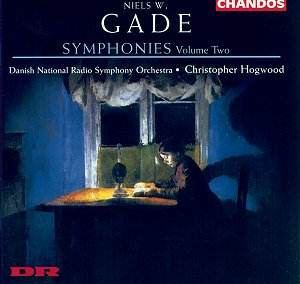 Composer: Richard HOL
Composer: Richard HOL
Works: Symphony No. 2 in D Minor, Op. 41 (1866), Symphony No. 4 in A Major (1889)
Performers: Residentie Orchestra The Hague, Matthias Bamert (conductor)
Recording: 21 – 23/3/01, Dr. Anton Philipszaal, The Hague, The Netherlands – DDD
Label: CHANDOS CHAN 9952 [62.35]
The rediscovery of Richard Hol’s symphonic works invites a fresh exploration of Dutch orchestral music from the late 19th century. Hol (1825-1904), a multifaceted musician and influential figure in the Netherlands, composed during an era marked by the dominance of German Romanticism. His Second and Fourth Symphonies, newly recorded by Matthias Bamert and the Residentie Orchestra, reflect the tonal language and orchestration typical of his time, yet they also hint at a distinct Dutch character that merits further examination.
Bamert’s interpretation is characterized by clarity and sensitivity, aptly capturing the essence of Hol’s stylistic influences, particularly those of Mendelssohn and Schubert. The Second Symphony opens with a slow introduction that sets a contemplative mood before transitioning into a vibrant allegro. The orchestral colors are deftly managed, with strings and woodwinds blending seamlessly. The slow movement, marked by a prayerful introspection, emerges as a standout, with Bamert allowing the poignant melodies to resonate fully. One can hear echoes of Schubert’s lyrical lines, yet Hol’s voice remains unmistakably his own. The ensuing scherzo is infused with Mendelssohnian vivacity, and the rousing finale, brimming with energy, rounds out a work that, while perhaps not a groundbreaking masterpiece, is undeniably engaging.
The Fourth Symphony, presented here for the first time in a modern recording, showcases Hol’s mature style. The slow introduction is reminiscent of Brahms, leading into a spirited allegro that recalls Dvořák’s buoyancy. This comparison is particularly striking in the lively scherzo, where the orchestra’s rhythmic precision and exuberance shine. The adagio movement is especially moving, featuring lush harmonies and a deep emotional core that highlights Hol’s capacity for introspection. Bamert’s direction here is particularly commendable, as he balances the orchestral textures to draw out the movement’s profound melancholy. The finale, another nod to Mendelssohn, encapsulates the symphony’s overall charm and vitality.
Chandos has once again demonstrated its commitment to high-quality recordings, and this release is no exception. The sound engineering captures the clarity and warmth of the orchestra, allowing each instrumental voice to be heard distinctly while maintaining an organic blend. The recording’s balance ensures that the listener can appreciate the intricate counterpoint and orchestration that Hol employed, which may be overlooked in less adept productions.
As the second installment in Chandos’s exploration of Dutch repertoire, this recording serves as a valuable addition to the canon of late Romantic symphonic music. While Hol’s symphonies may not rise to the level of their contemporaries in the broader European context, they offer a delightful glimpse into a unique musical perspective that deserves recognition. The Residentie Orchestra’s performance under Bamert’s baton showcases not only the technical proficiency required but also an affection for the music that resonates throughout the recording. Hol’s symphonies provide an enriching experience, inviting listeners to engage with a composer who, while perhaps overshadowed by his peers, contributes a distinct voice to the symphonic landscape.



